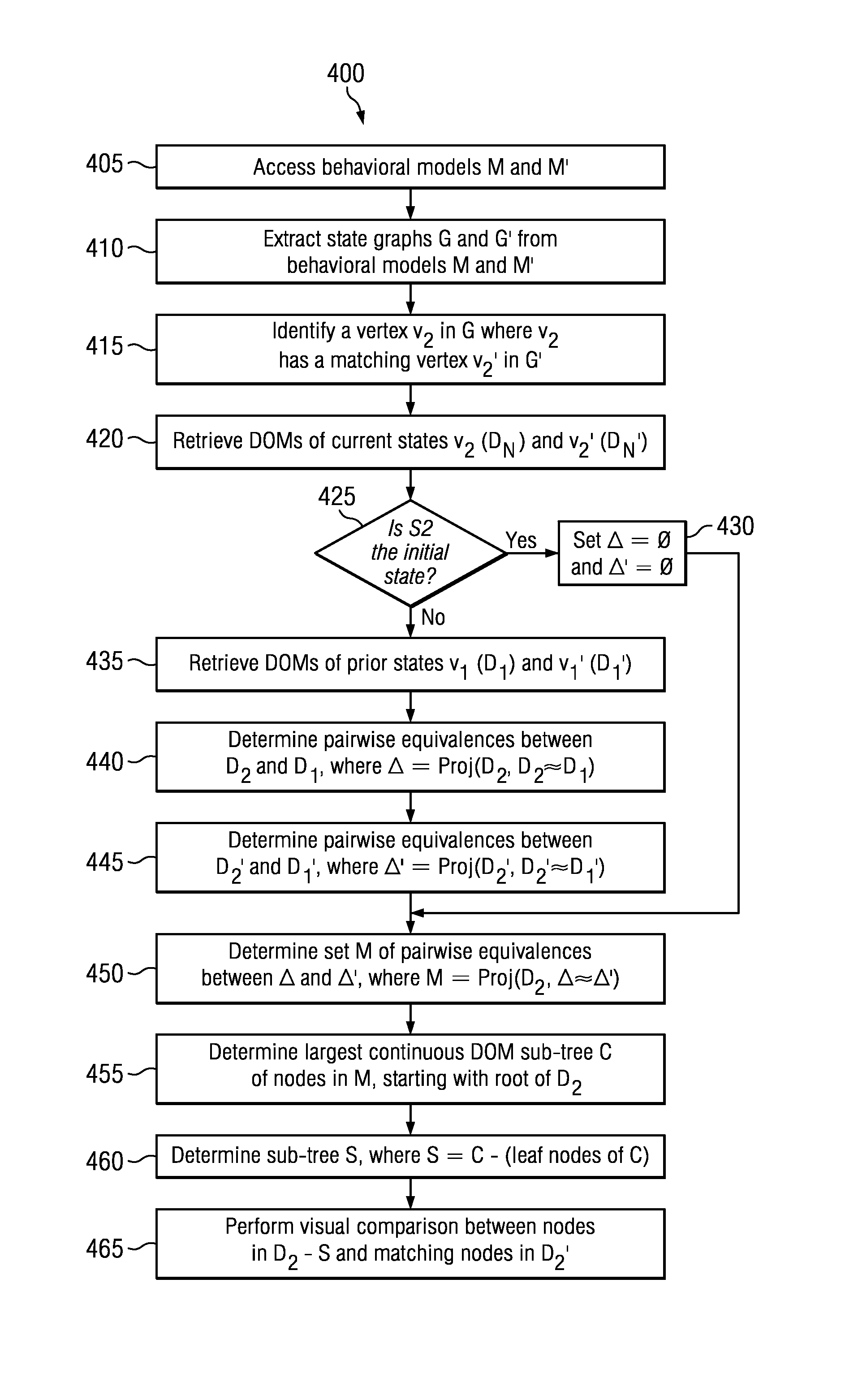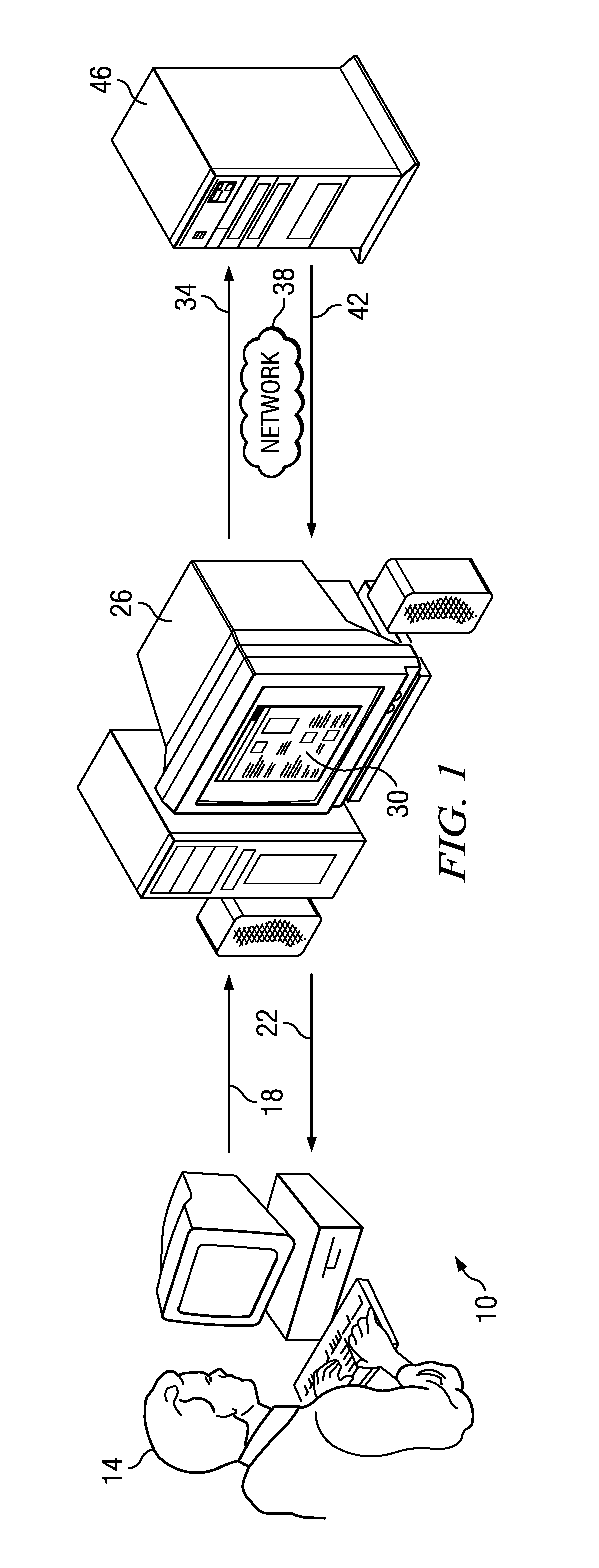Incremental visual comparison of web browser screens
a web browser and visual comparison technology, applied in the field of visual comparison of web browsers, can solve the problems of false positives, unsatisfactory comparison of dom information in different web browsers, and again unsatisfactory comparison of web pages rendered in such browsers
- Summary
- Abstract
- Description
- Claims
- Application Information
AI Technical Summary
Benefits of technology
Problems solved by technology
Method used
Image
Examples
Embodiment Construction
[0027]Embodiments disclosed herein provide methods for reducing the number of visual comparisons required when performing cross-browser testing and regression testing of event-driven applications. In some embodiments, for each client-tier environment, a behavioral model of an event-driven application is extracted as a state graph; a structured representation (i.e., DOM tree) of the screen for each state / node for a given client-tier environment is compared against a structured representation of a previously-compared state / node in order to discern which portions changed and which did not. Unchanged portions are removed from the set of nodes for which subsequent visual differencing between client-tier environments is to be performed, thereby reducing the number of duplicative and costly visual comparisons performed.
System Overview
[0028]FIG. 1 illustrates an example system 10 for accessing one or more event-driven applications 30. System 10 includes a user 14, one or more clients 26, on...
PUM
 Login to View More
Login to View More Abstract
Description
Claims
Application Information
 Login to View More
Login to View More - R&D
- Intellectual Property
- Life Sciences
- Materials
- Tech Scout
- Unparalleled Data Quality
- Higher Quality Content
- 60% Fewer Hallucinations
Browse by: Latest US Patents, China's latest patents, Technical Efficacy Thesaurus, Application Domain, Technology Topic, Popular Technical Reports.
© 2025 PatSnap. All rights reserved.Legal|Privacy policy|Modern Slavery Act Transparency Statement|Sitemap|About US| Contact US: help@patsnap.com



